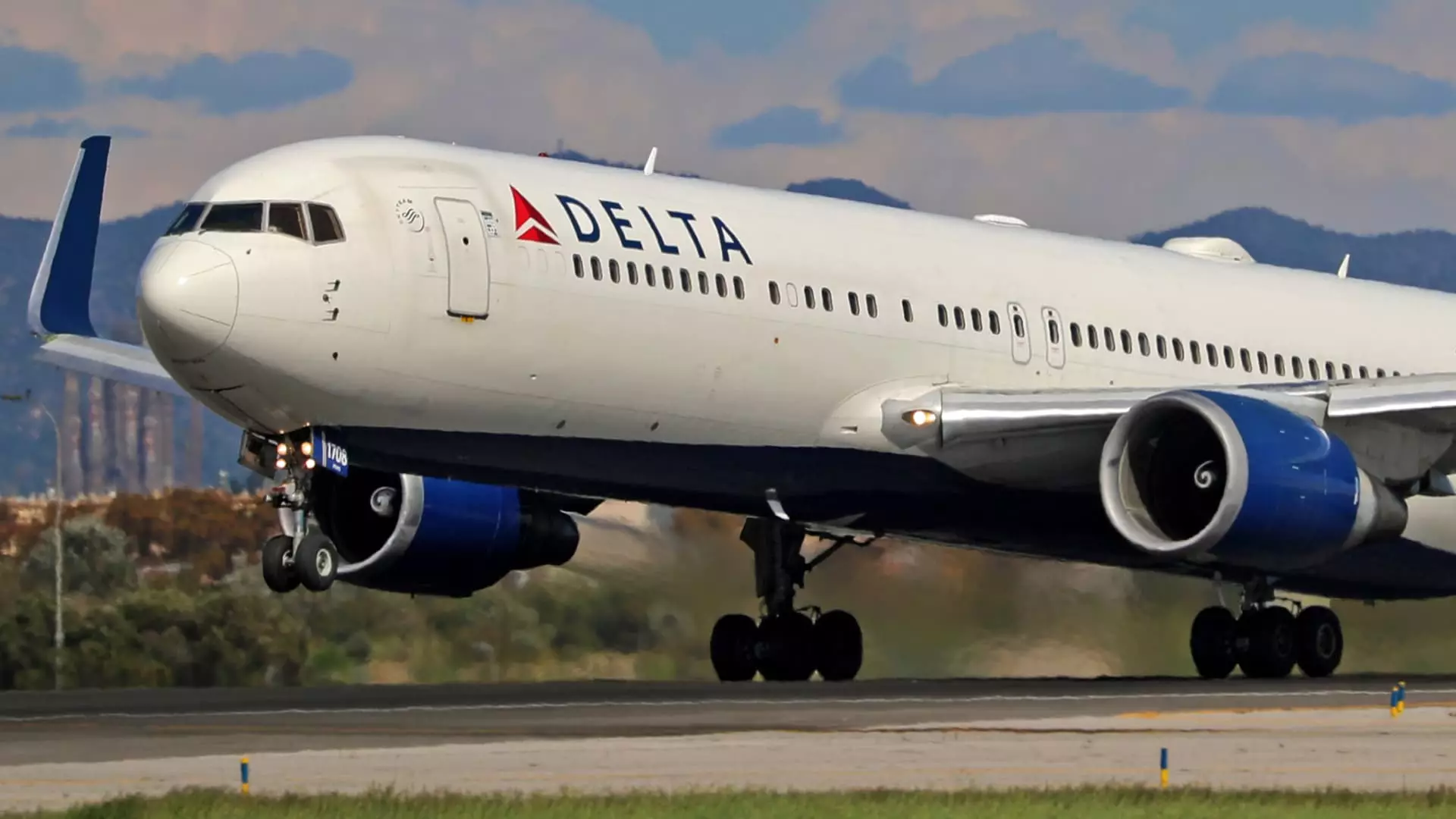As we step into a new era of travel, the airline industry’s apparent turbulence exposes a significant shift in consumer behavior that cannot be overlooked. Once, spontaneous getaways and cross-continental trips were valued experiences deemed indispensable—an economic necessity for many. Yet, recent data points towards an unsettling decrease in demand as consumers are increasingly reconsidering their travel plans. Forget the bubble of perpetual growth we’ve seen in the tourism sector; today’s patrons are pulling back, opting to save their dollars amid rising costs and economic uncertainties.
Travel bookings from Canada are waning noticeably, reflecting not just a localized issue but a broader restlessness in international travel dynamics. Analysts caution that this isn’t just a seasonal fluctuation; it’s indicative of something deeper at play—consumer hesitance fueled by escalating tariffs and broader economic pressures brought forth by government actions, particularly surrounding tariffs that could dampen industry optimism.
The Impact of Economic Policy
It’s critical to address the atmosphere of apprehension hanging around the airline sector due to the sweeping economic policies that seem to lean toward isolationism. Such policies are not merely abstract concepts floating in political discourse; they materialize into tangible challenges faced by the industry. A significant increase in tariffs—set at no less than 10%—has contributed to the overall sense of uncertainty gripping both consumers and airlines alike. The once-flourishing demand for international travel shows signs of regression, fueled in no small part by these policies that stifle not only airline growth but consumer willingness to invest in experiences abroad.
This reality is augmented by corporate layoffs that have pruned the workforce in sectors that traditionally bolster business travel. When companies tighten their belts, the first discretionary spending to face the axe is often travel, a fact that resonates loudly in earnings reports from major airlines including Delta, American, and Southwest.
Downward Pressure on Stock Values
The stock market’s response to these downward trends in travel bookings has been anything but forgiving. The airline sector is now witnessing its worst decline since 2020—a crash that indicates a market sentiment steeped in pessimism. Once renowned as resilient, airlines are now slashing their outlooks for 2025, signaling that the era of robust profitability might be a distant memory. Delta’s warning about weaker corporate and leisure bookings is not an isolated incident but rather a bellwether forewarning echoed by its competitors.
The implications are stark, with Delta’s stocks plummeting by more than 38%, alongside dire drops from American and United. These figures raise questions about the sustainability of a market environment that previously thrived in the face of inflation and perceived travel demand. Analysts are revamping their ratings, and as consumers shed their travel aspirations, it cannot be ignored that a drop in stock prices signals a potential implosion lurking on the horizon.
A Cautionary Note on Consumer Confidence
Consumer confidence is a fragile entity. The recent plunge in optimism regarding spending—particularly on high-dollar experiences—tells us a lot about the psyche of the modern traveler. As reported by the Bank of America Institute, consumers appear to be hesitating to book trips, weighed down by concerns over economic stability and inflation levels. Even promial hiccups like bad weather or scheduling anomalies—like a late Easter—contribute to this overall sense of reluctance.
This uncertainty is widespread and can have cascading effects, particularly on premium travel sectors that once buoyed profits for airlines. While some experts believe that the front of the airplane may still be booked, it cannot mask the looming reality of diminished spending power among travelers, especially among Baby Boomers who might cut back on travel given their current economic posture.
Future Prospects and the Airline Landscape
As we look ahead, questions arise about how airlines will navigate these challenging waters. Will they adjust their operations and pricing structures to stimulate demand, perhaps using enticing reward programs to lure frequent flyers back?
The industry is at a crucial juncture, and while there’s hope that premium travel will maintain some resilience, the question remains: will it be enough to offset the potential losses from more cautious spending habits? The future of air travel may depend heavily on airlines adapting not just to consumer preferences, but also to the economic landscape as shifts in policies continue to reverberate throughout the industry. As the proverbial storm clouds gather, the time has come for these carriers to reconsider their strategies if they wish to navigate the rocky terrain ahead.

